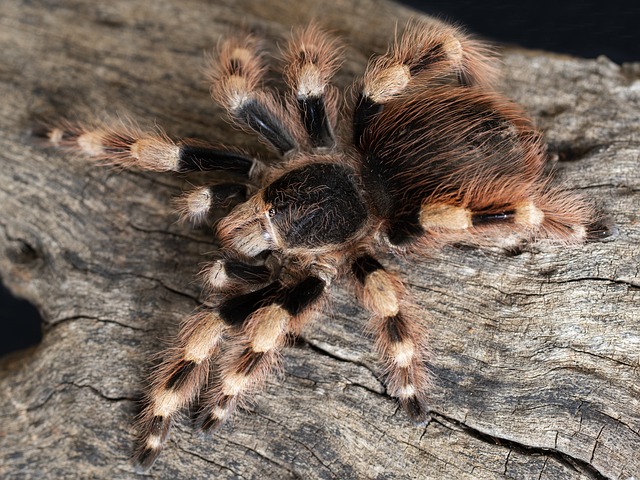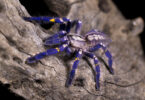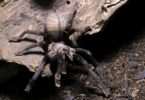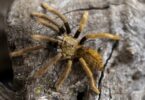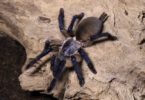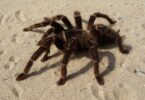In this post, we’ll explore the Nhandu coloratovillosus, a bold tarantula native to Brazil and Paraguay‘s sprawling grasslands.
Throughout this discussion, you’ll dive into their world – from striking patterns to fascinating behaviors – unlocking secrets that make them amazing pets or study specimens. Let’s unravel their mystery together!
Appearence and lifespan
Nhandu coloratovillosus stands out with a striking black shell on its back. This tarantula wears an eye-catching pattern of black and white stripes along its legs, making it look like it’s always ready for a fancy event! Adult females are real survivors in the spider world, living up to 20 years.
Males have much shorter lives – they often reach just 6 years old before saying goodbye.
They’re big spiders, too – their leg span can stretch up to 6 inches across. That’s about as long as a pencil! They also have urticating hairs. These are special tiny hairs that can be thrown at threats or bugs that bother them.
It’s like having their own superhero power to keep safe! With these bold looks and super-long lives, Nhandu coloratovillosus sure is one amazing creature!
Behavior and venom potency of Nhandu coloratovillosus
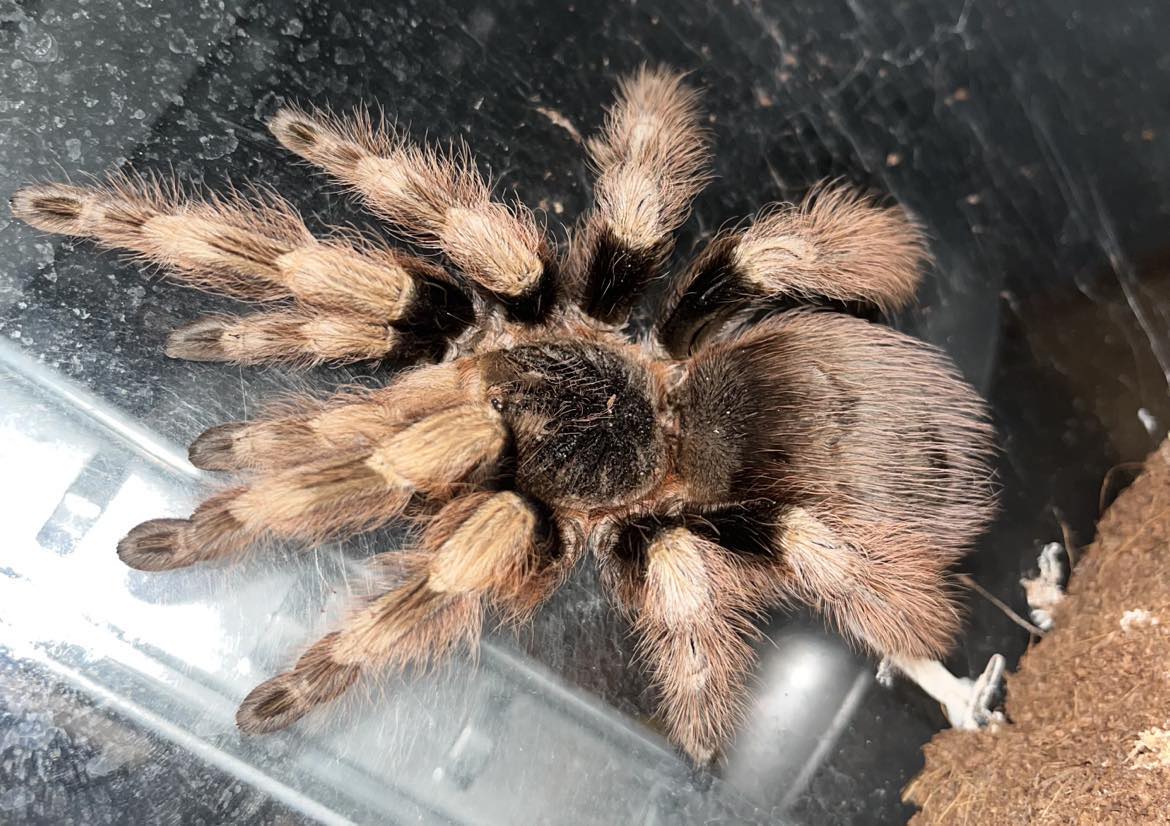
N.coloratovillosus female
This spider, known as the Nhandu coloratovillosus, can sometimes act tough. It may rear up or even try to bite if it feels scared or threatened. Yet, its venom is not dangerous to us humans.
It’s much like getting a bee sting – it hurts but doesn’t cause real harm.
Nhandu coloratovillosus also has tiny hairs on its abdomen that can irritate skin and eyes. When in danger, they kick these hairs off to defend themselves rather than biting right away.
These spiders need some space and shouldn’t be picked up often since they value their peace and quiet.
Enclosure
Creating the right home for Nhandu coloratovillosus is key to its health and happiness. Here’s what you need to set up the perfect enclosure for your tarantula:
- Choose a tank that’s at least four times larger than the spider. This will give it plenty of room to move and burrow.
- Add lots of substrate, like peat moss or coconut fiber. The layer should be deep enough for digging—think about 4-6 inches.
- Keep a water dish in the enclosure. Make sure it’s shallow so your spider can drink without danger.
- Maintain proper humidity around 65%. A spray bottle can help moisten the substrate, but don’t make it too wet.
- Offer hiding spots with items like cork bark or plant pots. These spaces make the spider feel safe.
- Make sure the lid is secure! Tarantulas are sneaky and might try to explore outside their home.
- Don’t forget temperature control. Aim for 80 degrees Fahrenheit during the day, dropping just a bit at night but not needed.
Breeding of Nhandu coloratovillosus
This species breeds quite easily in captivity. The female, ready for copulation, is rarely aggressive towards the male. Before mating occurs, both individuals should be generously fed. From my own experiences, it’s better to transfer the male to the female’s terrarium during mating. After fertilization, females typically consume large amounts of food. They usually construct an egg sac within 3 months. Approximately 4 weeks after the eggs are laid, the first instar nymphs hatch, and within the next few days to weeks, they should molt into second instar nymphs. A sac may contain up to 1000 offspring, typically around 600.
Conclusion
Nhandu coloratovillosus, or the White Striped Birdeater, is a striking spider. Its black and white legs and reddish hairs make it a showpiece in any tarantula collection. Additionally, due to its frequent nervous behavior, this tarantula instills in us useful habits that will come in handy if we ever decide to acquire a highly venomous species.
With proper care, they can live up to 20 years, becoming a long-term buddy. For anyone starting with pet spiders, this terrestrial species promises an exciting adventure!
FAQs
1. Should beginners get a Nhandu coloratovillosus for their collection?
Yes, it’s a great species for a first tarantula despite flicking urticating hairs and occasionally being skittish, it possesses very weak venom.
2. What should I feed my Nhandu coloratovillosus?
Just like other big spiders, your Nhandu will be happy munching on insects—think crickets or roaches—and sometimes a superworms too!

